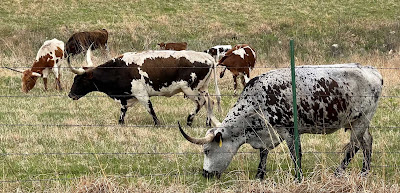 |
| Lycoris squamigera |
If there is one plant that I would tell every young gardener to start with, particularly children or young adult gardeners with children, it's a "Surprise Lily." Uninspiring but also untroubling for 360 days of the year, it's the other 5 days that will make you thrilled to have planted it. Whatever name you plant these bulbs under, be it "Magic Lily," "Resurrection Lily," "Surprise Lily," or even the titillating and misogynistic "Naked Ladies," Lycoris squamigera is a delightful, delicate treasure in bloom.
The large bulbs are not costly to purchase, and often they're a passalong plant, a gift from a friend or neighbor. You just throw them into the ground about 5 inches down and then you forget about them. No worries about insects or disease, or predators. Each spring, their spot will be marked with a nice, trouble-free clump of grassy foliage, a useful reminder to not plant something else there, and then the foliage will die down and, in my area, blow away. Then one fine morning in late July or August, you'll be puttering around and they'll catch your eye, suddenly (hey, let's start a new name, "Sudden Lilies"!) about 2 1/2 feet tall, translucent flowers of the most beautiful pink, perhaps tinged with a little orange if you catch them, as I did today, in the early morning sunlight. The flowers will last 5-10 days and then the neighbor's dog or the wind will knock them down and that'll be it until next year, when you'll have forgotten them and suddenly they'll appear again, heathy, carefree, and joyful.
The only other surprises that ProfessorRoush might consider a close second to "Naked Ladies" is the appearance of new baby calves and that's been a part of my world recently too. Just this week, one of the Longhorn mama's in the pasture brought this beautiful white-face-mark-on-brown calf into the world. And last week I was tickled by the gorgeous black-and-white "mini-me" from the similarly-colored cow below. All leading me to conclude that life is too short without Sudden Lilies and baby calves. And shorter still, in a word of caution, if you get too close to this little calf because those big horns on Mama aren't just there for decoration!



.jpg)
.jpg)
.jpg)
.jpg)





